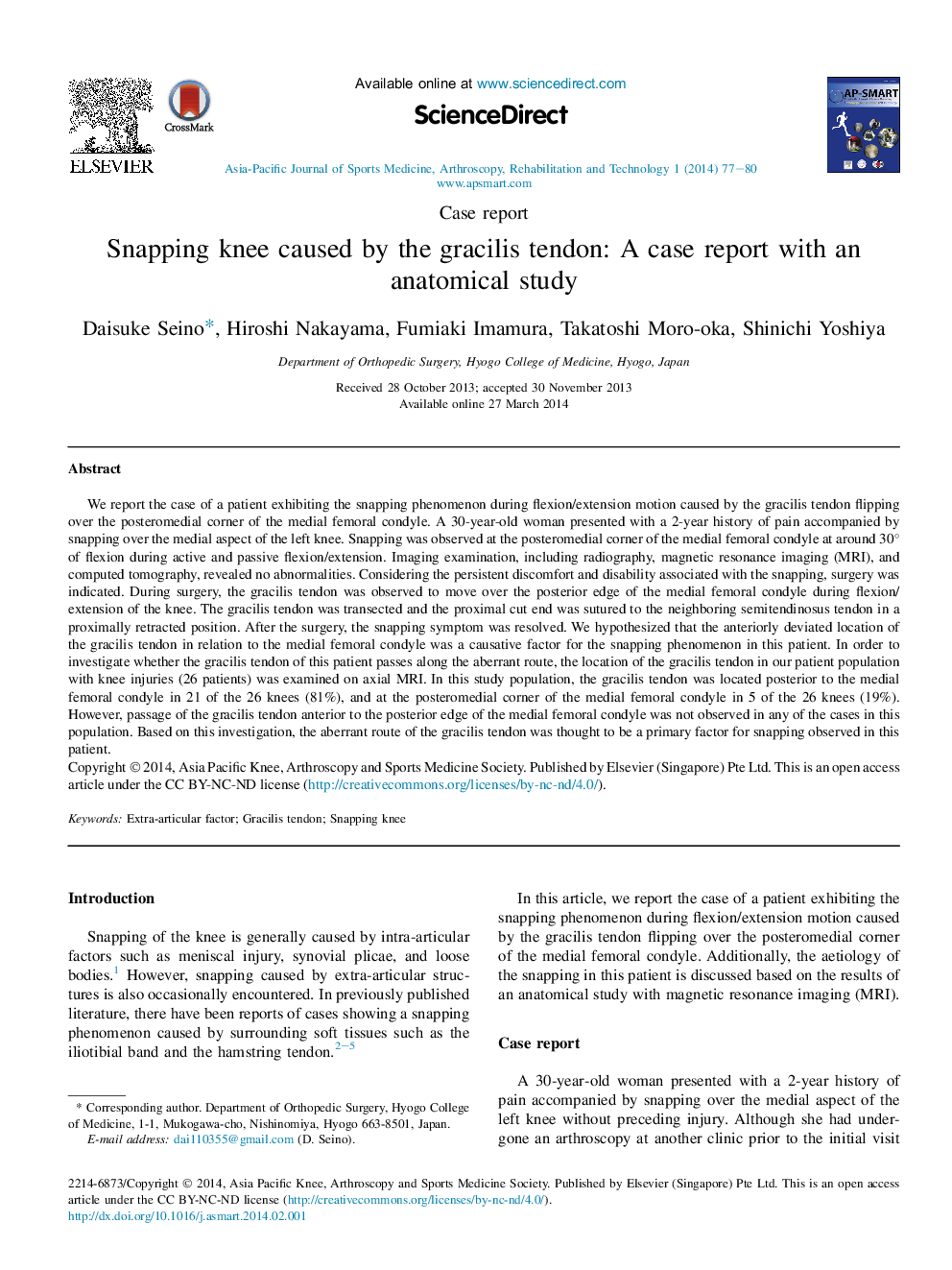| Article ID | Journal | Published Year | Pages | File Type |
|---|---|---|---|---|
| 2739558 | Asia-Pacific Journal of Sports Medicine, Arthroscopy, Rehabilitation and Technology | 2014 | 4 Pages |
We report the case of a patient exhibiting the snapping phenomenon during flexion/extension motion caused by the gracilis tendon flipping over the posteromedial corner of the medial femoral condyle. A 30-year-old woman presented with a 2-year history of pain accompanied by snapping over the medial aspect of the left knee. Snapping was observed at the posteromedial corner of the medial femoral condyle at around 30° of flexion during active and passive flexion/extension. Imaging examination, including radiography, magnetic resonance imaging (MRI), and computed tomography, revealed no abnormalities. Considering the persistent discomfort and disability associated with the snapping, surgery was indicated. During surgery, the gracilis tendon was observed to move over the posterior edge of the medial femoral condyle during flexion/extension of the knee. The gracilis tendon was transected and the proximal cut end was sutured to the neighboring semitendinosus tendon in a proximally retracted position. After the surgery, the snapping symptom was resolved. We hypothesized that the anteriorly deviated location of the gracilis tendon in relation to the medial femoral condyle was a causative factor for the snapping phenomenon in this patient. In order to investigate whether the gracilis tendon of this patient passes along the aberrant route, the location of the gracilis tendon in our patient population with knee injuries (26 patients) was examined on axial MRI. In this study population, the gracilis tendon was located posterior to the medial femoral condyle in 21 of the 26 knees (81%), and at the posteromedial corner of the medial femoral condyle in 5 of the 26 knees (19%). However, passage of the gracilis tendon anterior to the posterior edge of the medial femoral condyle was not observed in any of the cases in this population. Based on this investigation, the aberrant route of the gracilis tendon was thought to be a primary factor for snapping observed in this patient.
